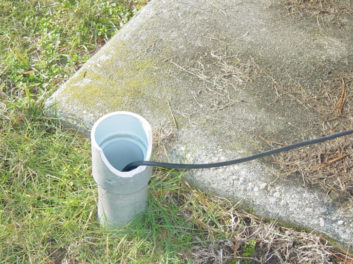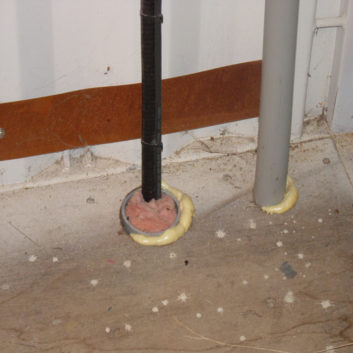
For the majority of our readers, winter is approaching.
I was privileged recently to deliver a Society of Broadcast Engineers webinar. I heard from a number of engineers afterwards who shared some great tips and comments.
One came from longtime Workbench contributor and New England contract engineer Stephanie Donnell.
She noted my suggestion about posting pictures from your transmitter site adventures in the staff break room. She usually shared them via an all staff mailing list; these days you could do so on Slack or the station’s private social media group.
[Read: Workbench: Readers React to Frank Hertel’s “Outtaphaser”]
It’s both amusing and sad that so many station colleagues don’t have any idea what transmitter sites look like, how we keep them running or what it might take just to get there at all.
(Do you have photos of your own transmitter sites that would serve as good examples of images suitable for educating your co-workers? Pix that show what it’s like at the site, and why it can be challenging or fun? Share them with us!)
Keeping an Eye on Things
As the cost of IP-based security cameras have dropped dramatically, Stephanie offered thoughts about the usefulness of these cameras at sites.
First, consider spending the money for cameras that have remote control of pan/tilt/zoom. These features provide a much wider range of viewing. If the model has a built-in a microphone, that’s even better.

One incredibly useful application is monitoring the weekly generator tests. In the office, Stephanie would bring up the camera on the PC and be able to not only see but also hear the generator as it did its initial cranking to start and while it ran.
You may want to rethink being alerted for motion detection, depending on the amount of wildlife around your site. Instead, Stephanie set the camera to store captured images. It has captured lots of deer, a bear and many hikers and hunters. The point is, you’ll have the images if a problem occurs but you’re not getting pinged every time an animal walks by.
On the subject of cameras, Stephanie encourages engineers to purchase a dashboard camera for the company vehicle. This can be a great personal protection tool as you drive to remote sites.
Winter Tips
My SBE presentations have included preparing an RF site for winter as well as how to keep a generator in good health. These topics overlap.
Besides conducting annual preventive generator maintenance before the cold arrives, Stephanie added a simple but important tip: Be sure to top off your fuel.
Depending on where you are located, getting refills after a certain point in the fall may not be an option; and in certain parts of the country, spring fuel delivery may not be possible until the mud dries up.
You’ll also want to keep a quart or more of extra oil around, in case that needs to be topped off following an extended power outage.
I’ve mentioned using Bonide’s “Mouse Magic” packages, which emit a peppermint odor that mice detest; mothballs are also an inexpensive way to keep mice away from generators and transmitter buildings.

If you use a C-Band dish as an STL, be sure to check the dish heater. Use an AC current clamp to make sure all legs of the heater are drawing adequate current.
One of the strangest things that Stephanie saw to cause a heater to fail wasn’t a mouse, it was tiny black ants. They like to keep warm and dry, just like mice and bees.
Inside the heater control box she found an ant colony. Some of the ants had been crushed on the contacts of the heavy duty relay that supplied power to the heaters. Enough dead ants had built up on the relay contacts so that it wouldn’t fully engage to power the heater.
In another instance, a heater controller showed a GFI fault, most likely from a nearby lightning strike during the summer. Stephanie reset the fault and the heater functioned as needed. But if it had not been checked, it would not have activated when it started to snow.
Also routinely check the dish for signs of cracks, both on the front and rear.
Stephanie once found what appeared to be a .22 bullet hole in a dish. Fall is hunting season, so wear orange when you’re at a site. LL Bean sells a warm orange fleece vest.
It can also come in handy if you break down on the side of the road. But you can avoid those breakdowns by ensuring your vehicle has been serviced before winter arrives.
To find webinars from the Society of Broadcast Engineers visit http://sbe.org/education/webinars-by-sbe. Also check out info about its valuable Technical Professional Training Program at http://sbe.org/tpt.
John Bisset, CPBE, has more than five decades in broadcasting and is in his 31st year of Workbench. He handles western U.S. radio sales for the Telos Alliance and is a past recipient of the SBE’s Educator of the Year Award.
Helping others makes you feel good, so why not send your tips to [email protected].
The post Workbench: Time to Plan for Old Man Winter appeared first on Radio World.

